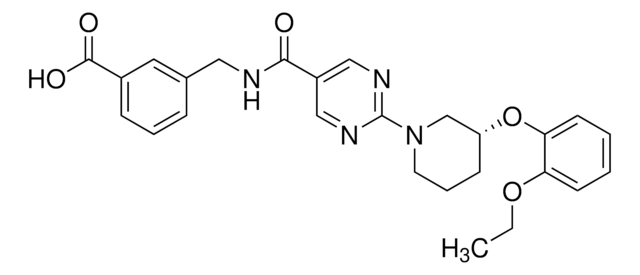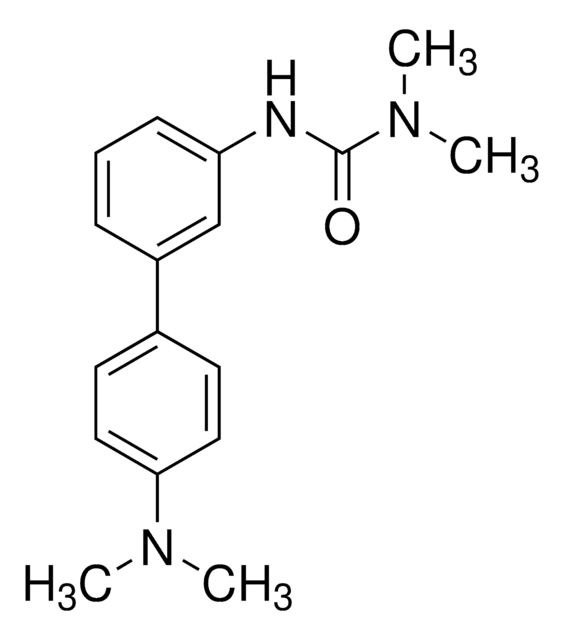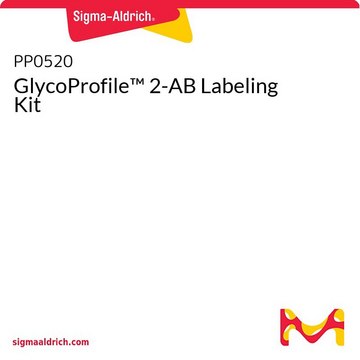PZ0233
PF-06424439
≥98% (HPLC)
Synonym(e):
[(3R)-1-[2-[1-(4-Chloro-1H-pyrazol-1-yl)cyclopropyl]-3H-imidazo[4,5-b]pyridin-5-yl]-3-piperidinyl]-1-pyrrolidinyl-methanone methanesulfonate
About This Item
Empfohlene Produkte
Assay
≥98% (HPLC)
Form
powder
Optische Aktivität
[α]/D +7 to +11°, c = 1.0 in methanol
Farbe
white to light brown
Löslichkeit
H2O: 10 mg/mL, clear
Lagertemp.
room temp
SMILES String
O=C([C@@H]1CCCN(C2=NC(NC(C3(CC3)N4N=CC(Cl)=C4)=N5)=C5C=C2)C1)N6CCCC6.CS(=O)(O)=O
InChI
1S/C22H26ClN7O.CH4O3S/c23-16-12-24-30(14-16)22(7-8-22)21-25-17-5-6-18(26-19(17)27-21)29-11-3-4-15(13-29)20(31)28-9-1-2-10-28;1-5(2,3)4/h5-6,12,14-15H,1-4,7-11,13H2,(H,25,26,27);1H3,(H,2,3,4)/t15-;/m1./s1
InChIKey
ZSTFDNQQOJUJFL-XFULWGLBSA-N
Anwendung
- to study its effects on cell mortality and lipid synthesis in epithelial colon cells and colorectal cancer stem cells
- to study its effects on HeLa cells
- to study its inhibitory effects on neutral lipid synthesis in HT-1080 cells
Biochem./physiol. Wirkung
Lagerklassenschlüssel
11 - Combustible Solids
WGK
WGK 3
Flammpunkt (°F)
Not applicable
Flammpunkt (°C)
Not applicable
Analysenzertifikate (COA)
Suchen Sie nach Analysenzertifikate (COA), indem Sie die Lot-/Chargennummer des Produkts eingeben. Lot- und Chargennummern sind auf dem Produktetikett hinter den Wörtern ‘Lot’ oder ‘Batch’ (Lot oder Charge) zu finden.
Besitzen Sie dieses Produkt bereits?
In der Dokumentenbibliothek finden Sie die Dokumentation zu den Produkten, die Sie kürzlich erworben haben.
Kunden haben sich ebenfalls angesehen
Verwandter Inhalt
Discover Bioactive Small Molecules for Lipid Signaling Research
Unser Team von Wissenschaftlern verfügt über Erfahrung in allen Forschungsbereichen einschließlich Life Science, Materialwissenschaften, chemischer Synthese, Chromatographie, Analytik und vielen mehr..
Setzen Sie sich mit dem technischen Dienst in Verbindung.










